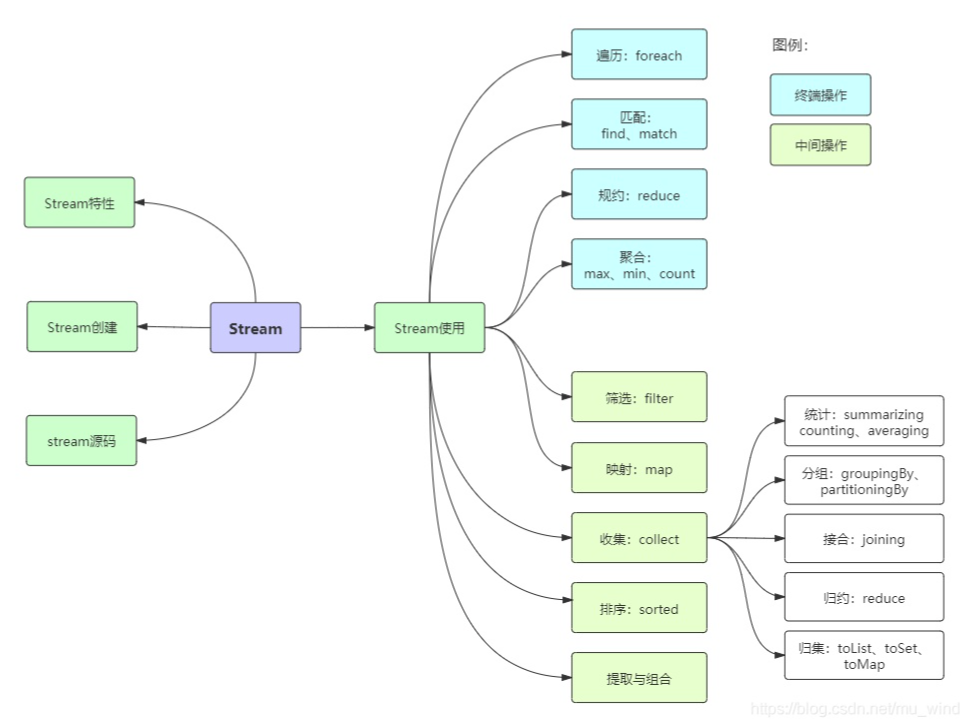
1. 函数式接口
函数式接口是一种只有单一抽象方法的接口,使用 @FunctionalInterface 来描述,可以隐式地转换成 Lambda 表达式。使用 Lambda 表达式来实现函数式接口,不需要提供类名和方法定义,通过一行代码提供函数式接口的实例,就可以让函数成为程序中的头等公民,可以像普通数据一样作为参数传递,而不是作为一个固定的类中的固定方法。java.util.function 包中定义了各种函数式接口.
@FunctionalInterfacepublic interface Consumer<T> {/*** Performs this operation on the given argument.** @param t the input argument*/void accept(T t);/*** Returns a composed {@code Consumer} that performs, in sequence, this* operation followed by the {@code after} operation. If performing either* operation throws an exception, it is relayed to the caller of the* composed operation. If performing this operation throws an exception,* the {@code after} operation will not be performed.** @param after the operation to perform after this operation* @return a composed {@code Consumer} that performs in sequence this* operation followed by the {@code after} operation* @throws NullPointerException if {@code after} is null*/default Consumer<T> andThen(Consumer<? super T> after) {Objects.requireNonNull(after);return (T t) -> { accept(t); after.accept(t); };}}
@Testpublic void functionInterfaceTest() {//Predicate接口是输入一个参数,返回布尔值。我们通过and方法组合两个Predicate条件,判断是否值大于0并且是偶数Predicate<Integer> positiveNumber = i -> i > 0;Predicate<Integer> evenNumber = i -> i % 2 == 0;assertTrue(positiveNumber.and(evenNumber).test(2));Predicate<String> emptyString = StrUtil::isEmpty;//falseSystem.out.println(emptyString.test("hello"));//Consumer接口是消费一个数据。我们通过andThen方法组合调用两个Consumer,输出两行abcdefgConsumer<String> println = System.out::println;println.andThen(println).accept("abcdefg");//Function接口是输入一个数据,计算后输出一个数据。我们先把字符串转换为大写,然后通过andThen组合另一个Function实现字符串拼接Function<String, String> upperCase = String::toUpperCase;Function<String, String> duplicate = s -> s.concat(s);//assertThat(upperCase.andThen(duplicate).apply("test"), is("TESTTEST"));System.out.println(upperCase.andThen(duplicate).apply("test"));//Supplier是提供一个数据的接口。这里我们实现获取一个随机数Supplier<Integer> random = () -> ThreadLocalRandom.current().nextInt();System.out.println(random.get());//BinaryOperator是输入两个同类型参数,输出一个同类型参数的接口。这里我们通过方法引用获得一个整数加法操作,通过Lambda表达式定义一个减法操作,然后依次调用BinaryOperator<Integer> add = Integer::sum;BinaryOperator<Integer> subtraction = (a, b) -> a - b;//assertThat(subtraction.apply(add.apply(1, 2), 3), is(0));System.out.println(subtraction.apply(add.apply(1, 2), 3));}
2. 自定义函数式接口
「java8系列」神奇的函数式接口 - 码处高效的文章 - 知乎 https://zhuanlan.zhihu.com/p/74145492
3. Optional 简化判空操作

使用 Optional 来避免空指针,以及使用它的 fluent API 简化冗长的 if-else 判空逻辑
public void functionInterfaceTest() {//[1] empty--返回一个空的OptionalOptional<Object> empty = Optional.empty();System.out.println("[1] ---> " + empty);//[2] of--将值进行Optional包装,如果值为null则抛出NPESystem.out.println("[2] ---> " + Optional.of(1));// NullPointerException//System.out.println("[2] ---> " + Optional.of(null));//[3] get--如果值存在则获取值,否则抛出NoSuchElementExceptionassertThat(Optional.of(1).get(), is(1));System.out.println("[3] ---> " + Optional.of(1).get());//[4] 通过ofNullable来初始化一个null,通过orElse方法实现Optional中无数据的时候返回一个默认值assertThat(Optional.ofNullable(null).orElse("A"), is("A"));System.out.println("[4] ---> " + Optional.ofNullable(null).orElse("A"));//[5] ifPresent--是否有值, 有值就调用Consumer消费Consumer<String> println = (str) -> System.out.println("[5] ---> " + str);Optional.of("hello").ifPresent(println);//[6] OptionalDouble是基本类型double的Optional对象,isPresent判断有无数据assertFalse(OptionalDouble.empty().isPresent());//[7] map--如果有值,则引用传入的Functional函数// 通过map方法可以对Optional对象进行级联转换,不会出现空指针,转换后还是一个OptionalassertThat(Optional.of(1).map(Math::incrementExact).get(), is(2));//[8] filter--如果有值,并且匹配Predicate,则返回包含值得Optional,否则返回空的Optional// 通过filter实现Optional中数据的过滤,得到一个Optional,然后级联使用orElse提供默认值assertThat(Optional.of(1).filter(integer -> integer % 2 == 0).orElse(null), is(nullValue()));//[9] 通过orElseThrow实现无数据时抛出异常Optional.empty().orElseThrow(IllegalArgumentException::new);}
4. Stream概述
Java 8 是一个非常成功的版本,这个版本新增的Stream,配合同版本出现的 Lambda ,给我们操作集合(Collection)提供了极大的便利。
那么什么是Stream?
Stream将要处理的元素集合看作一种流,在流的过程中,借助Stream API对流中的元素进行操作,比如:筛选、排序、聚合等。
Stream可以由数组或集合创建,对流的操作分为两种:
- 中间操作,每次返回一个新的流,可以有多个。
- 终端操作,每个流只能进行一次终端操作,终端操作结束后流无法再次使用。终端操作会产生一个新的集合或值。
另外,Stream有几个特性:
- stream不存储数据,而是按照特定的规则对数据进行计算,一般会输出结果。
- stream不会改变数据源,通常情况下会产生一个新的集合或一个值。
- stream具有延迟执行特性,只有调用终端操作时,中间操作才会执行。
5. Stream的创建
Stream可以通过集合数组创建。
1、通过java.util.Collection.stream()方法用集合创建流
2、使用List<String> list = Arrays.asList("a", "b", "c");// 创建一个顺序流Stream<String> stream = list.stream();// 创建一个并行流Stream<String> parallelStream = list.parallelStream();
java.util.Arrays.stream(T[] array)方法用数组创建流
3、使用int[] array={1,3,5,6,8};IntStream stream = Arrays.stream(array);
Stream的静态方法:of()、iterate()、generate()
输出结果:Stream<Integer> stream = Stream.of(1, 2, 3, 4, 5, 6);Stream<Integer> stream2 = Stream.iterate(0, (x) -> x + 3).limit(4);stream2.forEach(System.out::println); // 0 2 4 6 8 10Stream<Double> stream3 = Stream.generate(Math::random).limit(3);stream3.forEach(System.out::println);
0 3 6 90.67961569092719940.19143142088542830.8116932592396652
**stream**和**parallelStream**的简单区分: stream是顺序流,由主线程按顺序对流执行操作,而parallelStream是并行流,内部以多线程并行执行的方式对流进行操作,但前提是流中的数据处理没有顺序要求。例如筛选集合中的奇数,两者的处理不同之处: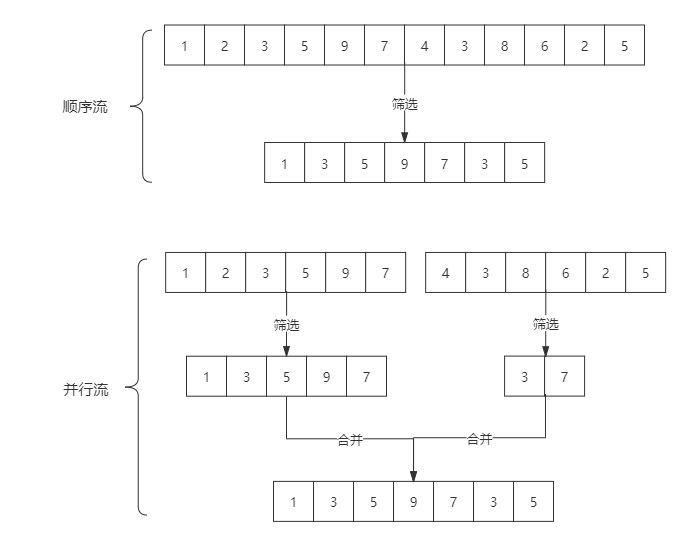
如果流中的数据量足够大,并行流可以加快处速度。
除了直接创建并行流,还可以通过parallel()把顺序流转换成并行流:
Optional<Integer> findFirst = list.stream().parallel().filter(x->x>6).findFirst();
6. Stream的使用
在使用stream之前,先理解一个概念:Optional 。
Optional类是一个可以为null的容器对象。如果值存在则isPresent()方法会返回true,调用get()方法会返回该对象。更详细说明请见:菜鸟教程Java 8 Optional类

案例使用的员工类
这是后面案例中使用的员工类:
List<Person> personList = new ArrayList<Person>();personList.add(new Person("Tom", 8900, "male", "New York"));personList.add(new Person("Jack", 7000, "male", "Washington"));personList.add(new Person("Lily", 7800, "female", "Washington"));personList.add(new Person("Anni", 8200, "female", "New York"));personList.add(new Person("Owen", 9500, "male", "New York"));personList.add(new Person("Alisa", 7900, "female", "New York"));class Person {private String name; // 姓名private int salary; // 薪资private int age; // 年龄private String sex; //性别private String area; // 地区// 构造方法public Person(String name, int salary, int age,String sex,String area) {this.name = name;this.salary = salary;this.age = age;this.sex = sex;this.area = area;}// 省略了get和set,请自行添加}
6.1 遍历/匹配(foreach/find/match)
Stream也是支持类似集合的遍历和匹配元素的,只是Stream中的元素是以Optional类型存在的。Stream的遍历、匹配非常简单。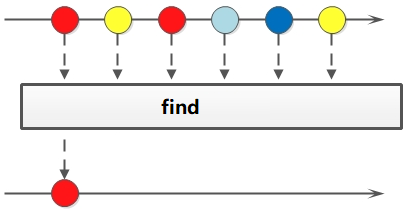
// import已省略,请自行添加,后面代码亦是public class StreamTest {public static void main(String[] args) {List<Integer> list = Arrays.asList(7, 6, 9, 3, 8, 2, 1);// 遍历输出符合条件的元素list.stream().filter(x -> x > 6).forEach(System.out::println);// 匹配第一个Optional<Integer> findFirst = list.stream().filter(x -> x > 6).findFirst();// 匹配任意(适用于并行流)Optional<Integer> findAny = list.parallelStream().filter(x -> x > 6).findAny();// 是否包含符合特定条件的元素boolean anyMatch = list.stream().anyMatch(x -> x < 6);System.out.println("匹配任意一个值:" + findAny.get());System.out.println("是否存在大于6的值:" + anyMatch);}}
6.2 筛选(filter)
筛选,是按照一定的规则校验流中的元素,将符合条件的元素提取到新的流中的操作。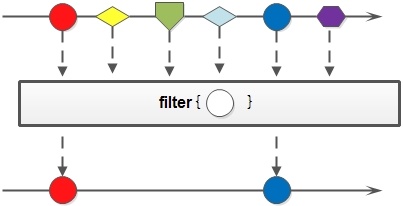
案例一:筛选出**Integer**集合中大于7的元素,并打印出来
public class StreamTest {public static void main(String[] args) {List<Integer> list = Arrays.asList(6, 7, 3, 8, 1, 2, 9);Stream<Integer> stream = list.stream();stream.filter(x -> x > 7).forEach(System.out::println);}}
预期结果:
8 9
案例二: 筛选员工中工资高于8000的人,并形成新的集合。 形成新集合依赖collect(收集),后文有详细介绍。
public class StreamTest {public static void main(String[] args) {List<Person> personList = new ArrayList<Person>();personList.add(new Person("Tom", 8900, 23, "male", "New York"));personList.add(new Person("Jack", 7000, 25, "male", "Washington"));personList.add(new Person("Lily", 7800, 21, "female", "Washington"));personList.add(new Person("Anni", 8200, 24, "female", "New York"));personList.add(new Person("Owen", 9500, 25, "male", "New York"));personList.add(new Person("Alisa", 7900, 26, "female", "New York"));List<String> fiterList = personList.stream().filter(x -> x.getSalary() > 8000).map(Person::getName).collect(Collectors.toList());System.out.print("高于8000的员工姓名:" + fiterList);}}
运行结果:
高于8000的员工姓名:[Tom, Anni, Owen]
6.3 聚合(max/min/count)
max、min、count这些字眼你一定不陌生,没错,在mysql中我们常用它们进行数据统计。Java stream中也引入了这些概念和用法,极大地方便了我们对集合、数组的数据统计工作。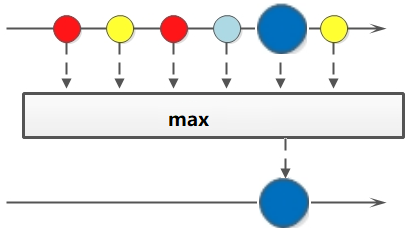
案例一:获取**String**集合中最长的元素。
public class StreamTest {public static void main(String[] args) {List<String> list = Arrays.asList("adnm", "admmt", "pot", "xbangd", "weoujgsd");Optional<String> max = list.stream().max(Comparator.comparing(String::length));System.out.println("最长的字符串:" + max.get());}}
输出结果:
最长的字符串:weoujgsd
案例二:获取**Integer**集合中的最大值。
public class StreamTest {public static void main(String[] args) {List<Integer> list = Arrays.asList(7, 6, 9, 4, 11, 6);// 自然排序Optional<Integer> max = list.stream().max(Integer::compareTo);// 自定义排序Optional<Integer> max2 = list.stream().max(new Comparator<Integer>() {@Overridepublic int compare(Integer o1, Integer o2) {return o1.compareTo(o2);}});System.out.println("自然排序的最大值:" + max.get());System.out.println("自定义排序的最大值:" + max2.get());}}
输出结果:
自然排序的最大值:11自定义排序的最大值:11
案例三:获取员工工资最高的人。
public class StreamTest {public static void main(String[] args) {List<Person> personList = new ArrayList<Person>();personList.add(new Person("Tom", 8900, 23, "male", "New York"));personList.add(new Person("Jack", 7000, 25, "male", "Washington"));personList.add(new Person("Lily", 7800, 21, "female", "Washington"));personList.add(new Person("Anni", 8200, 24, "female", "New York"));personList.add(new Person("Owen", 9500, 25, "male", "New York"));personList.add(new Person("Alisa", 7900, 26, "female", "New York"));Optional<Person> max = personList.stream().max(Comparator.comparingInt(Person::getSalary));System.out.println("员工工资最大值:" + max.get().getSalary());}}
输出结果:
员工工资最大值:9500
案例四:计算**Integer**集合中大于6的元素的个数。
import java.util.Arrays;import java.util.List;public class StreamTest {public static void main(String[] args) {List<Integer> list = Arrays.asList(7, 6, 4, 8, 2, 11, 9);long count = list.stream().filter(x -> x > 6).count();System.out.println("list中大于6的元素个数:" + count);}}
输出结果:
list中大于6的元素个数:4
6.4 映射(map/flatMap)
映射,可以将一个流的元素按照一定的映射规则映射到另一个流中。分为map和flatMap:
map:接收一个函数作为参数,该函数会被应用到每个元素上,并将其映射成一个新的元素。flatMap:接收一个函数作为参数,将流中的每个值都换成另一个流,然后把所有流连接成一个流。
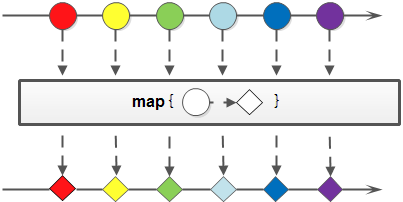
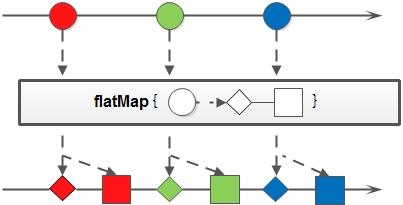
案例一:英文字符串数组的元素全部改为大写。整数数组每个元素+3。
public class StreamTest {public static void main(String[] args) {String[] strArr = { "abcd", "bcdd", "defde", "fTr" };List<String> strList = Arrays.stream(strArr).map(String::toUpperCase).collect(Collectors.toList());List<Integer> intList = Arrays.asList(1, 3, 5, 7, 9, 11);List<Integer> intListNew = intList.stream().map(x -> x + 3).collect(Collectors.toList());System.out.println("每个元素大写:" + strList);System.out.println("每个元素+3:" + intListNew);}}
输出结果:
每个元素大写:[ABCD, BCDD, DEFDE, FTR]每个元素+3:[4, 6, 8, 10, 12, 14]
案例二:将员工的薪资全部增加1000。
public class StreamTest {public static void main(String[] args) {List<Person> personList = new ArrayList<Person>();personList.add(new Person("Tom", 8900, 23, "male", "New York"));personList.add(new Person("Jack", 7000, 25, "male", "Washington"));personList.add(new Person("Lily", 7800, 21, "female", "Washington"));personList.add(new Person("Anni", 8200, 24, "female", "New York"));personList.add(new Person("Owen", 9500, 25, "male", "New York"));personList.add(new Person("Alisa", 7900, 26, "female", "New York"));// 不改变原来员工集合的方式List<Person> personListNew = personList.stream().map(person -> {Person personNew = new Person(person.getName(), 0, 0, null, null);personNew.setSalary(person.getSalary() + 10000);return personNew;}).collect(Collectors.toList());System.out.println("一次改动前:" + personList.get(0).getName() + "-->" + personList.get(0).getSalary());System.out.println("一次改动后:" + personListNew.get(0).getName() + "-->" + personListNew.get(0).getSalary());// 改变原来员工集合的方式List<Person> personListNew2 = personList.stream().map(person -> {person.setSalary(person.getSalary() + 10000);return person;}).collect(Collectors.toList());System.out.println("二次改动前:" + personList.get(0).getName() + "-->" + personListNew.get(0).getSalary());System.out.println("二次改动后:" + personListNew2.get(0).getName() + "-->" + personListNew.get(0).getSalary());}}
输出结果:
一次改动前:Tom–>8900一次改动后:Tom–>18900二次改动前:Tom–>18900二次改动后:Tom–>18900
案例三:将两个字符数组合并成一个新的字符数组。
public class StreamTest {public static void main(String[] args) {List<String> list = Arrays.asList("m,k,l,a", "1,3,5,7");List<String> listNew = list.stream().flatMap(s -> {// 将每个元素转换成一个streamString[] split = s.split(",");Stream<String> s2 = Arrays.stream(split);return s2;}).collect(Collectors.toList());System.out.println("处理前的集合:" + list);System.out.println("处理后的集合:" + listNew);}}
输出结果:
处理前的集合:[m-k-l-a, 1-3-5]处理后的集合:[m, k, l, a, 1, 3, 5]
6.5 归约(reduce)
归约,也称缩减,顾名思义,是把一个流缩减成一个值,能实现对集合求和、求乘积和求最值操作。
案例一:求**Integer**集合的元素之和、乘积和最大值。
public class StreamTest {public static void main(String[] args) {List<Integer> list = Arrays.asList(1, 3, 2, 8, 11, 4);// 求和方式1Optional<Integer> sum = list.stream().reduce((x, y) -> x + y);// 求和方式2Optional<Integer> sum2 = list.stream().reduce(Integer::sum);// 求和方式3Integer sum3 = list.stream().reduce(0, Integer::sum);// 求乘积Optional<Integer> product = list.stream().reduce((x, y) -> x * y);// 求最大值方式1Optional<Integer> max = list.stream().reduce((x, y) -> x > y ? x : y);// 求最大值写法2Integer max2 = list.stream().reduce(1, Integer::max);System.out.println("list求和:" + sum.get() + "," + sum2.get() + "," + sum3);System.out.println("list求积:" + product.get());System.out.println("list求和:" + max.get() + "," + max2);}}
输出结果:
list求和:29,29,29list求积:2112list求和:11,11
案例二:求所有员工的工资之和和最高工资。
public class StreamTest {public static void main(String[] args) {List<Person> personList = new ArrayList<Person>();personList.add(new Person("Tom", 8900, 23, "male", "New York"));personList.add(new Person("Jack", 7000, 25, "male", "Washington"));personList.add(new Person("Lily", 7800, 21, "female", "Washington"));personList.add(new Person("Anni", 8200, 24, "female", "New York"));personList.add(new Person("Owen", 9500, 25, "male", "New York"));personList.add(new Person("Alisa", 7900, 26, "female", "New York"));// 求工资之和方式1:Optional<Integer> sumSalary = personList.stream().map(Person::getSalary).reduce(Integer::sum);// 求工资之和方式2:Integer sumSalary2 = personList.stream().reduce(0, (sum, p) -> sum += p.getSalary(),(sum1, sum2) -> sum1 + sum2);// 求工资之和方式3:Integer sumSalary3 = personList.stream().reduce(0, (sum, p) -> sum += p.getSalary(), Integer::sum);// 求最高工资方式1:Integer maxSalary = personList.stream().reduce(0, (max, p) -> max > p.getSalary() ? max : p.getSalary(),Integer::max);// 求最高工资方式2:Integer maxSalary2 = personList.stream().reduce(0, (max, p) -> max > p.getSalary() ? max : p.getSalary(),(max1, max2) -> max1 > max2 ? max1 : max2);System.out.println("工资之和:" + sumSalary.get() + "," + sumSalary2 + "," + sumSalary3);System.out.println("最高工资:" + maxSalary + "," + maxSalary2);}}
输出结果:
工资之和:49300,49300,49300最高工资:9500,9500
6.6 收集(collect)
collect,收集,可以说是内容最繁多、功能最丰富的部分了。从字面上去理解,就是把一个流收集起来,最终可以是收集成一个值也可以收集成一个新的集合。
collect主要依赖java.util.stream.Collectors类内置的静态方法。
有关 Collectors 类的一些常用静态方法
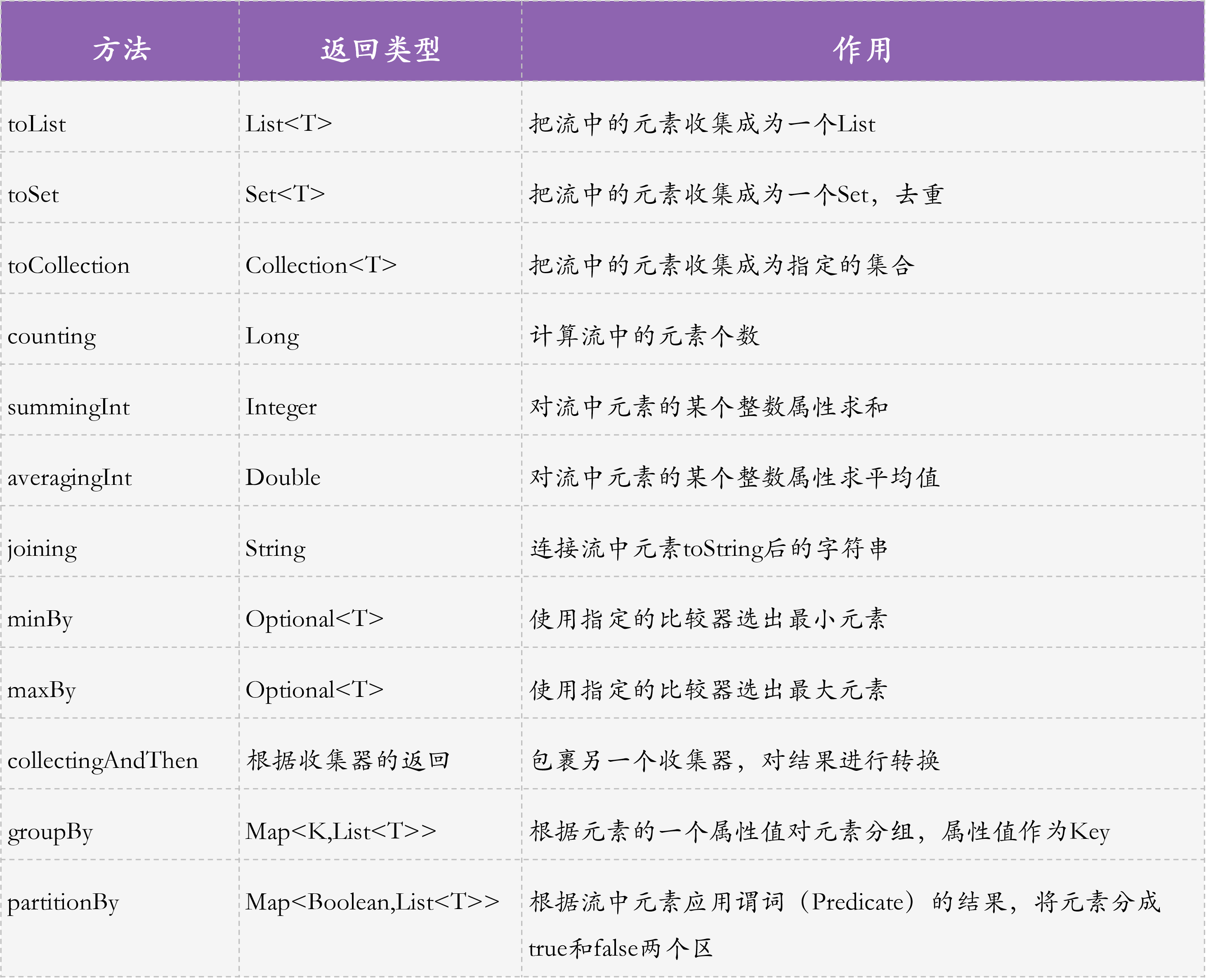
6.6.1 归集(toList/toSet/toMap)
因为流不存储数据,那么在流中的数据完成处理后,需要将流中的数据重新归集到新的集合里。toList、toSet和toMap比较常用,另外还有toCollection、toConcurrentMap等复杂一些的用法。
下面用一个案例演示toList、toSet和toMap:
public class StreamTest {public static void main(String[] args) {List<Integer> list = Arrays.asList(1, 6, 3, 4, 6, 7, 9, 6, 20);List<Integer> listNew = list.stream().filter(x -> x % 2 == 0).collect(Collectors.toList());Set<Integer> set = list.stream().filter(x -> x % 2 == 0).collect(Collectors.toSet());List<Person> personList = new ArrayList<Person>();personList.add(new Person("Tom", 8900, 23, "male", "New York"));personList.add(new Person("Jack", 7000, 25, "male", "Washington"));personList.add(new Person("Lily", 7800, 21, "female", "Washington"));personList.add(new Person("Anni", 8200, 24, "female", "New York"));Map<?, Person> map = personList.stream().filter(p -> p.getSalary() > 8000).collect(Collectors.toMap(Person::getName, p -> p));System.out.println("toList:" + listNew);System.out.println("toSet:" + set);System.out.println("toMap:" + map);}}
运行结果:
toList:[6, 4, 6, 6, 20]toSet:[4, 20, 6]toMap:{Tom=mutest.Person@5fd0d5ae, Anni=mutest.Person@2d98a335}
6.6.2 统计(count/averaging)
Collectors提供了一系列用于数据统计的静态方法:
- 计数:
count - 平均值:
averagingInt、averagingLong、averagingDouble - 最值:
maxBy、minBy - 求和:
summingInt、summingLong、summingDouble - 统计以上所有:
summarizingInt、summarizingLong、summarizingDouble
案例:统计员工人数、平均工资、工资总额、最高工资。
public class StreamTest {public static void main(String[] args) {List<Person> personList = new ArrayList<Person>();personList.add(new Person("Tom", 8900, 23, "male", "New York"));personList.add(new Person("Jack", 7000, 25, "male", "Washington"));personList.add(new Person("Lily", 7800, 21, "female", "Washington"));// 求总数Long count = personList.stream().collect(Collectors.counting());// 求平均工资Double average = personList.stream().collect(Collectors.averagingDouble(Person::getSalary));// 求最高工资Optional<Integer> max = personList.stream().map(Person::getSalary).collect(Collectors.maxBy(Integer::compare));// 求工资之和Integer sum = personList.stream().collect(Collectors.summingInt(Person::getSalary));// 一次性统计所有信息DoubleSummaryStatistics collect = personList.stream().collect(Collectors.summarizingDouble(Person::getSalary));System.out.println("员工总数:" + count);System.out.println("员工平均工资:" + average);System.out.println("员工工资总和:" + sum);System.out.println("员工工资所有统计:" + collect);}}
运行结果:
员工总数:3员工平均工资:7900.0员工工资总和:23700员工工资所有统计:DoubleSummaryStatistics{count=3, sum=23700.000000,min=7000.000000, average=7900.000000, max=8900.000000}
6.6.3 分组(partitioningBy/groupingBy)
- 分区:将
stream按条件分为两个Map,比如员工按薪资是否高于8000分为两部分。 - 分组:将集合分为多个Map,比如员工按性别分组。有单级分组和多级分组。

案例:将员工按薪资是否高于8000分为两部分;将员工按性别和地区分组
public class StreamTest {public static void main(String[] args) {List<Person> personList = new ArrayList<Person>();personList.add(new Person("Tom", 8900, "male", "New York"));personList.add(new Person("Jack", 7000, "male", "Washington"));personList.add(new Person("Lily", 7800, "female", "Washington"));personList.add(new Person("Anni", 8200, "female", "New York"));personList.add(new Person("Owen", 9500, "male", "New York"));personList.add(new Person("Alisa", 7900, "female", "New York"));// 将员工按薪资是否高于8000分组Map<Boolean, List<Person>> part = personList.stream().collect(Collectors.partitioningBy(x -> x.getSalary() > 8000));// 将员工按性别分组Map<String, List<Person>> group = personList.stream().collect(Collectors.groupingBy(Person::getSex));// 将员工先按性别分组,再按地区分组Map<String, Map<String, List<Person>>> group2 = personList.stream().collect(Collectors.groupingBy(Person::getSex, Collectors.groupingBy(Person::getArea)));System.out.println("员工按薪资是否大于8000分组情况:" + part);System.out.println("员工按性别分组情况:" + group);System.out.println("员工按性别、地区:" + group2);}}
输出结果:
员工按薪资是否大于8000分组情况:{false=[mutest.Person@2d98a335, mutest.Person@16b98e56, mutest.Person@7ef20235], true=[mutest.Person@27d6c5e0, mutest.Person@4f3f5b24, mutest.Person@15aeb7ab]}员工按性别分组情况:{female=[mutest.Person@16b98e56, mutest.Person@4f3f5b24, mutest.Person@7ef20235], male=[mutest.Person@27d6c5e0, mutest.Person@2d98a335, mutest.Person@15aeb7ab]}员工按性别、地区:{female={New York=[mutest.Person@4f3f5b24, mutest.Person@7ef20235], Washington=[mutest.Person@16b98e56]}, male={New York=[mutest.Person@27d6c5e0, mutest.Person@15aeb7ab], Washington=[mutest.Person@2d98a335]}}
6.6.4 接合(joining)
joining可以将stream中的元素用特定的连接符(没有的话,则直接连接)连接成一个字符串。
public class StreamTest {public static void main(String[] args) {List<Person> personList = new ArrayList<Person>();personList.add(new Person("Tom", 8900, 23, "male", "New York"));personList.add(new Person("Jack", 7000, 25, "male", "Washington"));personList.add(new Person("Lily", 7800, 21, "female", "Washington"));String names = personList.stream().map(p -> p.getName()).collect(Collectors.joining(","));System.out.println("所有员工的姓名:" + names);List<String> list = Arrays.asList("A", "B", "C");String string = list.stream().collect(Collectors.joining("-"));System.out.println("拼接后的字符串:" + string);}}
运行结果:
所有员工的姓名:Tom,Jack,Lily拼接后的字符串:A-B-C
6.6.5 归约(reducing)
Collectors类提供的reducing方法,相比于stream本身的reduce方法,增加了对自定义归约的支持。
public class StreamTest {public static void main(String[] args) {List<Person> personList = new ArrayList<Person>();personList.add(new Person("Tom", 8900, 23, "male", "New York"));personList.add(new Person("Jack", 7000, 25, "male", "Washington"));personList.add(new Person("Lily", 7800, 21, "female", "Washington"));// 每个员工减去起征点后的薪资之和(这个例子并不严谨,但一时没想到好的例子)Integer sum = personList.stream().collect(Collectors.reducing(0, Person::getSalary, (i, j) -> (i + j - 5000)));System.out.println("员工扣税薪资总和:" + sum);// stream的reduceOptional<Integer> sum2 = personList.stream().map(Person::getSalary).reduce(Integer::sum);System.out.println("员工薪资总和:" + sum2.get());}}
运行结果:
员工扣税薪资总和:8700员工薪资总和:23700
6.7 排序(sorted)
sorted,中间操作。有两种排序:
- sorted():自然排序,流中元素需实现Comparable接口
- sorted(Comparator com):Comparator排序器自定义排序
案例:将员工按工资由高到低(工资一样则按年龄由大到小)排序
public class StreamTest {public static void main(String[] args) {List<Person> personList = new ArrayList<Person>();personList.add(new Person("Sherry", 9000, 24, "female", "New York"));personList.add(new Person("Tom", 8900, 22, "male", "Washington"));personList.add(new Person("Jack", 9000, 25, "male", "Washington"));personList.add(new Person("Lily", 8800, 26, "male", "New York"));personList.add(new Person("Alisa", 9000, 26, "female", "New York"));// 按工资升序排序(自然排序)List<String> newList = personList.stream().sorted(Comparator.comparing(Person::getSalary)).map(Person::getName).collect(Collectors.toList());// 按工资倒序排序List<String> newList2 = personList.stream().sorted(Comparator.comparing(Person::getSalary).reversed()).map(Person::getName).collect(Collectors.toList());// 先按工资再按年龄升序排序List<String> newList3 = personList.stream().sorted(Comparator.comparing(Person::getSalary).thenComparing(Person::getAge)).map(Person::getName).collect(Collectors.toList());// 先按工资再按年龄自定义排序(降序)List<String> newList4 = personList.stream().sorted((p1, p2) -> {if (p1.getSalary() == p2.getSalary()) {return p2.getAge() - p1.getAge();} else {return p2.getSalary() - p1.getSalary();}}).map(Person::getName).collect(Collectors.toList());System.out.println("按工资升序排序:" + newList);System.out.println("按工资降序排序:" + newList2);System.out.println("先按工资再按年龄升序排序:" + newList3);System.out.println("先按工资再按年龄自定义降序排序:" + newList4);}}
运行结果:
按工资自然排序:[Lily, Tom, Sherry, Jack, Alisa]按工资降序排序:[Sherry, Jack, Alisa,Tom, Lily]先按工资再按年龄自然排序:[Sherry, Jack, Alisa, Tom, Lily]先按工资再按年龄自定义降序排序:[Alisa, Jack, Sherry, Tom, Lily]
6.8 提取/组合
流也可以进行合并、去重、限制、跳过等操作。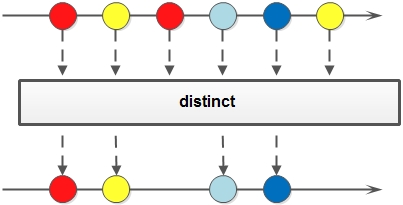
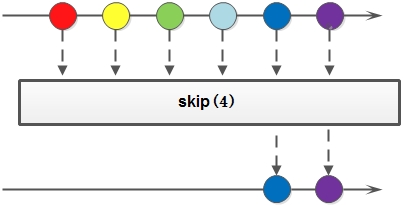

public class StreamTest {public static void main(String[] args) {String[] arr1 = { "a", "b", "c", "d" };String[] arr2 = { "d", "e", "f", "g" };Stream<String> stream1 = Stream.of(arr1);Stream<String> stream2 = Stream.of(arr2);// concat:合并两个流 distinct:去重List<String> newList = Stream.concat(stream1, stream2).distinct().collect(Collectors.toList());// limit:限制从流中获得前n个数据List<Integer> collect = Stream.iterate(1, x -> x + 2).limit(10).collect(Collectors.toList());// skip:跳过前n个数据List<Integer> collect2 = Stream.iterate(1, x -> x + 2).skip(1).limit(5).collect(Collectors.toList());System.out.println("流合并:" + newList);System.out.println("limit:" + collect);System.out.println("skip:" + collect2);}}
运行结果:
流合并:[a, b, c, d, e, f, g]limit:[1, 3, 5, 7, 9, 11, 13, 15, 17, 19]skip:[3, 5, 7, 9, 11]
综合使用示例
public class StreamDetailTest {private static Random random = new Random();private List<Order> orders;@Beforepublic void data() {orders = Order.getData();orders.forEach(System.out::println);System.out.println("==========================================");}@Testpublic void filter() {System.out.println("//最近半年的金额大于40的订单");orders.stream().filter(Objects::nonNull).filter(order -> order.getPlacedAt().isAfter(LocalDateTime.now().minusMonths(6))).filter(order -> order.getTotalPrice() > 40).forEach(System.out::println);}@Testpublic void map() {//计算所有订单商品数量//通过两次遍历实现LongAdder longAdder = new LongAdder();orders.stream().forEach(order ->order.getOrderItemList().forEach(orderItem -> longAdder.add(orderItem.getProductQuantity())));//使用两次mapToLong+sum方法实现assertThat(longAdder.longValue(), is(orders.stream().mapToLong(order ->order.getOrderItemList().stream().mapToLong(OrderItem::getProductQuantity).sum()).sum()));//把IntStream通过转换Stream<Project>System.out.println(IntStream.rangeClosed(1, 10).mapToObj(i -> new Product((long) i, "product" + i, i * 100.0)).collect(toList()));}@Testpublic void sorted() {System.out.println("//大于50的订单,按照订单价格倒序前5");orders.stream().filter(order -> order.getTotalPrice() > 50).sorted(comparing(Order::getTotalPrice).reversed()).limit(5).forEach(System.out::println);}@Testpublic void flatMap() {//不依赖订单上的总价格字段System.out.println(orders.stream().mapToDouble(order -> order.getTotalPrice()).sum());//如果不依赖订单上的总价格,可以直接展开订单商品进行价格统计System.out.println(orders.stream().flatMap(order -> order.getOrderItemList().stream()).mapToDouble(item -> item.getProductQuantity() * item.getProductPrice()).sum());//另一种方式flatMap+mapToDouble=flatMapToDoubleSystem.out.println(orders.stream().flatMapToDouble(order ->order.getOrderItemList().stream().mapToDouble(item -> item.getProductQuantity() * item.getProductPrice())).sum());}@Testpublic void groupBy() {System.out.println("//按照用户名分组,统计下单数量");System.out.println(orders.stream().collect(groupingBy(Order::getCustomerName, counting())).entrySet().stream().sorted(Map.Entry.<String, Long>comparingByValue().reversed()).collect(toList()));System.out.println("//按照用户名分组,统计订单总金额");System.out.println(orders.stream().collect(groupingBy(Order::getCustomerName, summingDouble(Order::getTotalPrice))).entrySet().stream().sorted(Map.Entry.<String, Double>comparingByValue().reversed()).collect(toList()));System.out.println("//按照用户名分组,统计商品采购数量");System.out.println(orders.stream().collect(groupingBy(Order::getCustomerName,summingInt(order -> order.getOrderItemList().stream().collect(summingInt(OrderItem::getProductQuantity))))).entrySet().stream().sorted(Map.Entry.<String, Integer>comparingByValue().reversed()).collect(toList()));System.out.println("//统计最受欢迎的商品,倒序后取第一个");orders.stream().flatMap(order -> order.getOrderItemList().stream()).collect(groupingBy(OrderItem::getProductName, summingInt(OrderItem::getProductQuantity))).entrySet().stream().sorted(Map.Entry.<String, Integer>comparingByValue().reversed()).map(Map.Entry::getKey).findFirst().ifPresent(System.out::println);System.out.println("//统计最受欢迎的商品的另一种方式,直接利用maxBy");orders.stream().flatMap(order -> order.getOrderItemList().stream()).collect(groupingBy(OrderItem::getProductName, summingInt(OrderItem::getProductQuantity))).entrySet().stream().collect(maxBy(Map.Entry.comparingByValue())).map(Map.Entry::getKey).ifPresent(System.out::println);System.out.println("//按照用户名分组,选用户下的总金额最大的订单");orders.stream().collect(groupingBy(Order::getCustomerName, collectingAndThen(maxBy(comparingDouble(Order::getTotalPrice)), Optional::get))).forEach((k, v) -> System.out.println(k + "#" + v.getTotalPrice() + "@" + v.getPlacedAt()));System.out.println("//根据下单年月分组统计订单ID列表");System.out.println(orders.stream().collect(groupingBy(order -> order.getPlacedAt().format(DateTimeFormatter.ofPattern("yyyyMM")),mapping(order -> order.getId(), toList()))));System.out.println("//根据下单年月+用户名两次分组,统计订单ID列表");System.out.println(orders.stream().collect(groupingBy(order -> order.getPlacedAt().format(DateTimeFormatter.ofPattern("yyyyMM")),groupingBy(order -> order.getCustomerName(),mapping(order -> order.getId(), toList())))));}@Testpublic void maxMin() {orders.stream().max(comparing(Order::getTotalPrice)).ifPresent(System.out::println);orders.stream().min(comparing(Order::getTotalPrice)).ifPresent(System.out::println);}@Testpublic void reduce() {System.out.println("//统计花钱最多的人");System.out.println(orders.stream().collect(groupingBy(Order::getCustomerName, summingDouble(Order::getTotalPrice))).entrySet().stream().reduce(BinaryOperator.maxBy(Map.Entry.comparingByValue())).map(Map.Entry::getKey).orElse("N/A"));}@Testpublic void distinct() {System.out.println("//不去重的下单用户");System.out.println(orders.stream().map(order -> order.getCustomerName()).collect(joining(",")));System.out.println("//去重的下单用户");System.out.println(orders.stream().map(order -> order.getCustomerName()).distinct().collect(joining(",")));System.out.println("//所有购买过的商品");System.out.println(orders.stream().flatMap(order -> order.getOrderItemList().stream()).map(OrderItem::getProductName).distinct().collect(joining(",")));}@Testpublic void collect() {System.out.println("//生成一定位数的随机字符串");System.out.println(random.ints(48, 122).filter(i -> (i < 57 || i > 65) && (i < 90 || i > 97)).mapToObj(i -> (char) i).limit(20).collect(StringBuilder::new, StringBuilder::append, StringBuilder::append).toString());System.out.println("//所有下单的用户,使用toSet去重了");System.out.println(orders.stream().map(order -> order.getCustomerName()).collect(toSet()).stream().collect(joining(",", "[", "]")));System.out.println("//用toCollection收集器指定集合类型");System.out.println(orders.stream().limit(2).collect(toCollection(LinkedList::new)).getClass());System.out.println("//使用toMap获取订单ID+下单用户名的Map");orders.stream().collect(toMap(Order::getId, Order::getCustomerName)).entrySet().forEach(System.out::println);System.out.println("//使用toMap获取下单用户名+最近一次下单时间的Map");orders.stream().collect(toMap(Order::getCustomerName, Order::getPlacedAt, (x, y) -> x.isAfter(y) ? x : y)).entrySet().forEach(System.out::println);System.out.println("//订单平均购买的商品数量");System.out.println(orders.stream().collect(averagingInt(order ->order.getOrderItemList().stream().collect(summingInt(OrderItem::getProductQuantity)))));}@Testpublic void partition() {//先来看一下所有下单的用户orders.stream().map(order -> order.getCustomerName()).collect(toSet()).forEach(System.out::println);//根据是否有下单记录进行分区System.out.println(Customer.getData().stream().collect(partitioningBy(customer -> orders.stream().mapToLong(Order::getCustomerId).anyMatch(id -> id == customer.getId()))));}@Testpublic void skipLimit() {orders.stream().sorted(comparing(Order::getPlacedAt)).map(order -> order.getCustomerName() + "@" + order.getPlacedAt()).limit(2).forEach(System.out::println);orders.stream().sorted(comparing(Order::getPlacedAt)).map(order -> order.getCustomerName() + "@" + order.getPlacedAt()).skip(2).limit(2).forEach(System.out::println);}@Testpublic void peek() {orders.stream().filter(order -> order.getTotalPrice() > 40).peek(order -> System.out.println(order.toString())).map(Order::getCustomerName).collect(toList());}@Testpublic void customCollector() //自定义收集器{//最受欢迎收集器assertThat(Stream.of(1, 1, 2, 2, 2, 3, 4, 5, 5).collect(new MostPopularCollector<>()).get(), is(2));assertThat(Stream.of('a', 'b', 'c', 'c', 'c', 'd').collect(new MostPopularCollector<>()).get(), is('c'));assertThat(Stream.concat(Stream.concat(IntStream.rangeClosed(1, 1000).boxed(), IntStream.rangeClosed(1, 1000).boxed()), Stream.of(2)).parallel().collect(new MostPopularCollector<>()).get(), is(2));}}

